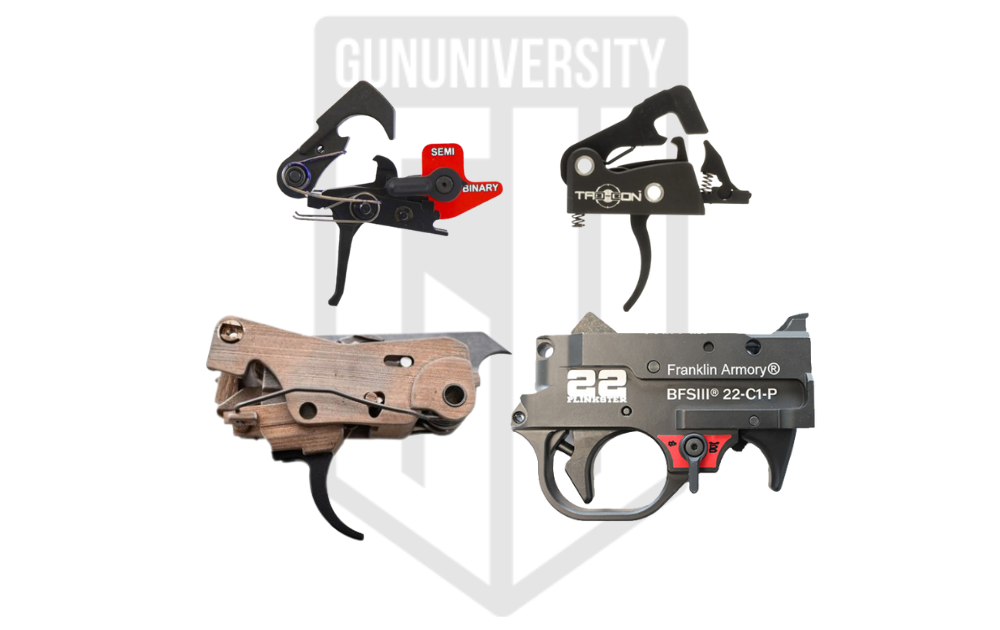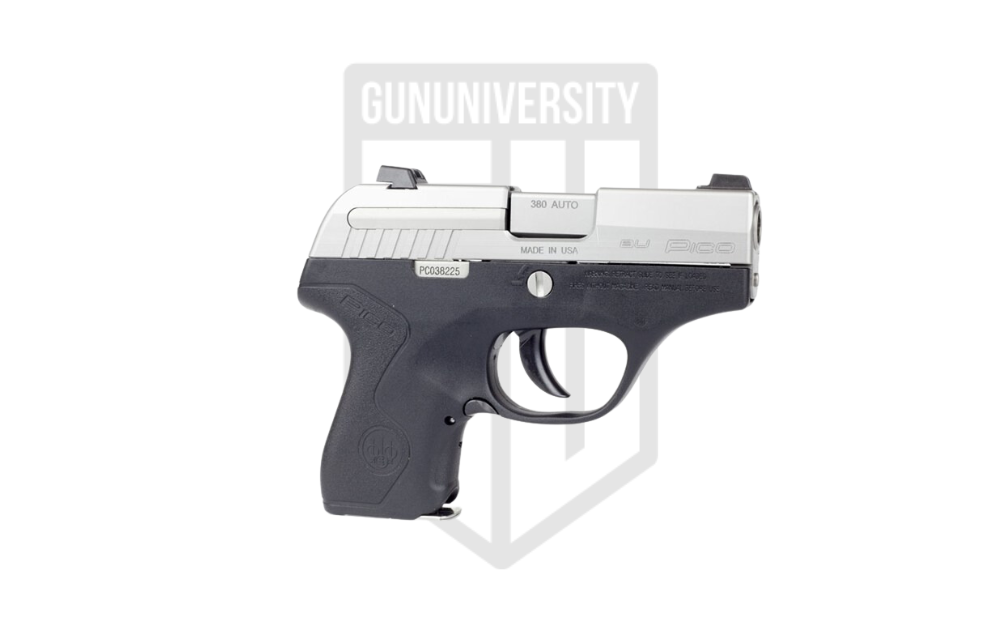Glock 42 vs Glock 43: Caliber Battle or Gun Comparison?
Glock created the modern polymer-framed striker fired handgun as we know it today, but the company was a relative latecomer in the single-stack pistol market. Thin, compact 9mm pistols dominated the 2010s carry market and developed rivals such as Smith & Wesson, Springfield, and Ruger. The release of a Glock single-stack 9mm pistol was widely anticipated, but it gave the shooting community pause in 2014 when the company introduced the Glock 42. It was a single-stack pistol in .380 ACP. A year later, the Glock 43 in 9mm was finally released. The G43 was not particularly innovative, but it quickly became a popular standard of measure by which we judge small handguns. The Glock 42, likewise, became a standard for small .380s that continue to be favored for pocket carry. But if one squints, it is hard to tell the Glock 42 and Glock 43 apart. That begs the question: What are the differences between them and which one is better for me? In this overview, we will discuss the features of each handgun, their performance on the range, and where each fits, given the advantages and pitfalls of single-stack handguns.
Spec Comparison

Glock 42
- Final Grade : B+
- MSRP : $479.00
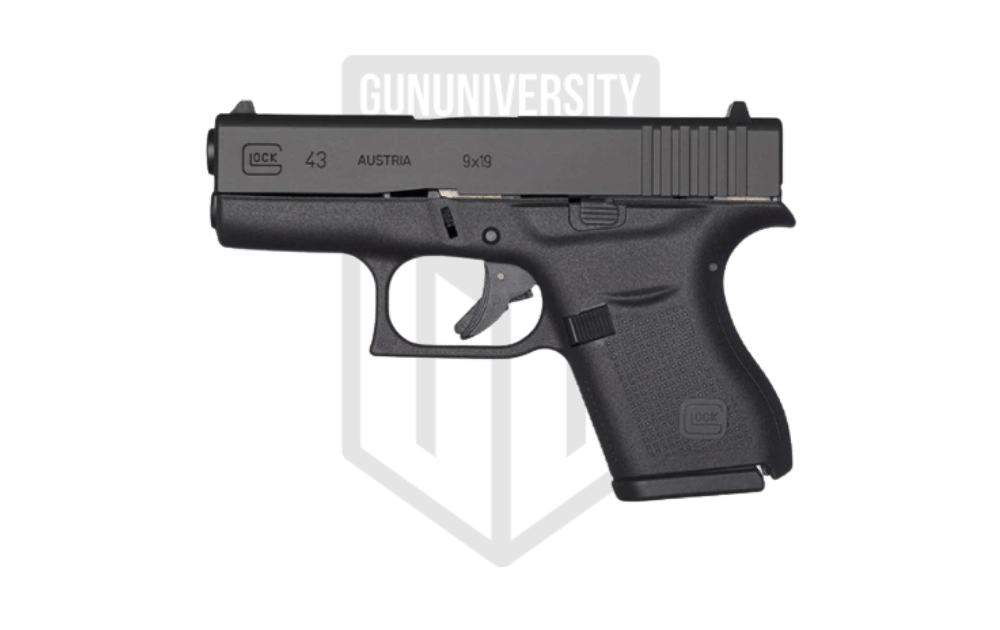
Glock 43
- Final Grade : A+
- MSRP : $538.00
The Glock 42
G42 Glock 42
Glock 42
The G42 packs all the features GLOCK customers have come to appreciate – from the GLOCK SAFE ACTION system with its multiple integrated safety features to the brand’s proven reliability and durability.
KelTec revived the .380 ACP cartridge in the American market when they introduced the P3AT in 2003. This new polymer framed pistol was as small and light as older .25 ACP handguns that previously fit the role of a pocket pistol. But it was chambered in the substantially more powerful .380 round. In short order, a slew of polymer .380s cropped into the market. The Ruger LCP and the Smith & Wesson Bodyguard became the most popular, selling into the millions of units.
From a marketing standpoint, unrolling the Glock 42 in .380 made sense. This is the first single-stack that Glock made and it remains the smallest and least expensive Glock handgun made. To date, it is also the only Glock line that has no variants. To learn more, we have a complete Glock 42 Review.
Models and Variations of the Glock 42
Only the stock Glock 42 is available.
Glock 42 Gun Deals
-
$398.89
-
$398.89
-
$399.99
-
$399.00
-
$448.00
The Glock 43
G43 Glock 43
Glock 43
The Glock 43 is their single stack, subcompact 9mm that’s quite small and carry friendly.
The long-awaited Glock 9mm single-stack handgun arrived in the form of the G43 in April 2015, months after the debut of the G42. Like the G42, it held six rounds of ammunition in the factory magazines. This capacity was par for the course in some small 9mm pistols, but the Glock’s biggest competitor, the S&W M&P Shield, held seven rounds in a flush fitting magazine. The G43 was perhaps better intended for those who already own Glock handguns to have a slim, easy to carry model chambered in a full-power cartridge. Glock and other manufacturers then did what they always do with the release of a new model, produced a great deal of aftermarket accessories. Shield Arms, ETS, among others, have come to the market with G43 magazines holding ten rounds or more. Others have come online with custom barrels, slides, and frames to suit any taste.
No matter the amount of customization, the G43 is a trim package. The stock Glock 43 is slightly taller and longer than the Glock 42, and is four ounces heavier. That makes the 43 more at home on the belt than in a pocket holster. New micro-compact staggered-magazine 9mm handguns like the Sig P365 and the Springfield Hellcat have come to overshadow lower capacity single-stacks like the G43. However, the latter remains a competitive option, where thinness has its advantages over the number of rounds in the magazine. Indeed, the G43 has managed to keep pace with new and improved versions.
Models and Variations of the Glock 43
There have been a few variations released of the Glock 43, and they have been important updates. While this article is focusing on the Glock 43, the Glock 43X has some great upgrades and you should check out our full review on the Glock 43x.
- Glock 43
- Glock 43X (extended grip and factory 10 round magazines)
- Glock 43X MOS (43X Red-Dot ready)
Glock 43 Gun Deals
-
$447.58
-
$448.00
-
$447.58
-
$449.00
-
$448.00
Glock 42 vs. Glock 43 Comparison
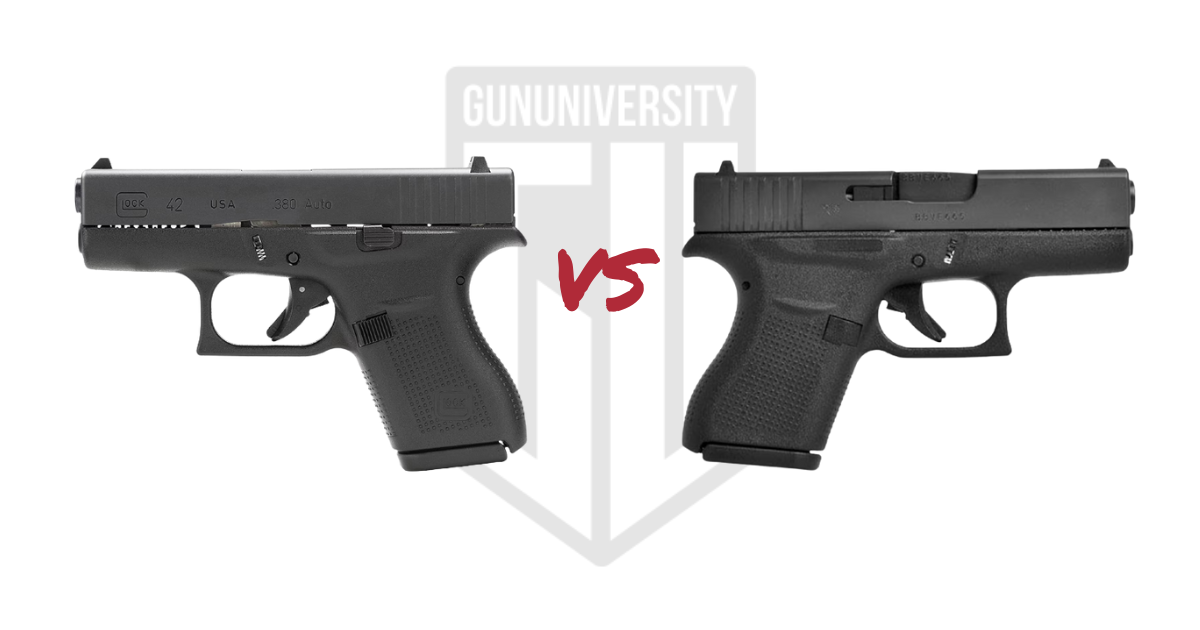
If you looked at the Glock 42 and Glock 43 from a distance of a few feet, you would not be able to tell the difference between the two. Both are polymer-framed, striker-fired handguns with the same magazine release, slide release, and takedown procedure. Both are small handguns that will be difficult to manage as hand size goes up. The only obvious differences are that the G43 is slightly larger than the G42 and the former is chambered in 9mm Luger, while the latter is chambered in .380. Most of the decision-making between the two will come down to whether you are in the market for one caliber or the other. The differences are more material than one might think, and there are a few other non-caliber considerations to be aware of because of those considerations.
Carryability
When it comes to ease of carry, the Glock 42 wins. It is slightly smaller in every dimension, and it can be as it uses the lower powered .380 ACP round. If you are looking for a pocket carry handgun, the G42 will have an edge. With that said, the 42 is slightly larger than a typical pocket .380. Most small .380s have a narrow two-finger grip and a short 2 ¾ inch barrel. The 42 is more substantial in those regards. That, combined with the short safe-action trigger pull, makes the 42 one of the best shooting .380s on the market.
The Glock 43 will not likely fit a typical pants pocket and those few extra ounces might make the difference between sagging pants and proper dress. When worn on the belt, whether inside the waistband or outside, the slightly larger 43 loses little. Indeed, the slightly longer grip on the 43 can make it easier than the 42 to draw from the same setup. It is easier to get a screwy grip on the smaller .380 pistols when you are in a rush.
Shootability
In terms of shootability, the Glock 42 wins once again. The Glock 42 paired with the lower powered .380 ACP round is pleasant to shoot, both as a .380 pocket pistol and against the G43 directly. It is not often that you find the terms .380 and pleasant to shoot in the same sentence. Typical .380 pocket pistols are lighter and have less of a grip to grab. Even though the .380 is not particularly powerful, these ergonomic features make pistols like these jumpy to handle and hard to shoot. The G42 is just large enough to be tame.
But take the slightly larger Glock 43 with its more powerful 9mm round and snappiness returns to the equation. This is especially true with +P and +P+ higher pressure defensive loadings, which give more muzzle blast and felt recoil. The G43 does not hurt to shoot, but there is a lag time getting back on target between shots that simply isn’t part of any pain tolerance equation. The G42’s gentler recoil impulse allows for quicker follow up shots and some forgiveness for those getting into concealed carry for the first time. But there is a fine line between having a pistol that is easy to handle but powerful enough to do the job.
Power
When it comes to power, or stopping power, I often give the platitude that shot placement is key. Where the bullet goes is more important than the numbers you see on the ballistics chart or what you see in jello. But if that were true, we would be carrying .22 handguns and training for head shots. Practicing for that is easy. Doing it in the real world is not. So it pays to choose a cartridge that you can control that will still do as much damage as possible in order to end the threat.
The Glock 43 in 9mm Luger is the simple answer. 9mm is a round that is plentiful and inexpensive. Almost without exception, a given 9mm load will outperform a given .380 load, even in shorter barreled handguns like these. 9mm excels at barrier penetration. Manufacturers have gone through pains to develop self-defense ammunition that expands and penetrates adequately in tissue.
By comparison, the .380 ACP round is more expensive, slightly less plentiful, and perhaps 2/3 as powerful as standard pressure 9mm ammunition. The .380 ACP starts out a few hundred feet per second slower and has a tougher time in both the barrier penetration and hollow-point performance departments. Some hollow-points expand too well and sacrifice penetration. Most do not expand. A small, but growing number of options perform perfectly. I, along with some who carry small .380s, opt to use full metal jacket ammunition to ensure reliable penetration and eliminate the guesswork of finding an optimal load. With that said, the .380 is no slouch of a cartridge and has a proven street record. In the form of the Glock 42, the position of the .380 is particularly enhanced. Its 3 ¼ inch barrel allows different hollow-point loads to achieve higher velocity than a typical 2 ¾ inch barreled handgun. The .380 round is particularly sensitive to barrel length and velocity. That higher velocity can translate to a greater portfolio of effective loads that would be ineffective in a smaller gun.
Customization
Although .380 is popular, 9mm Luger is more so by a large margin. From the start, the Glock 43 has been the subject of accessory manufacturers. From extended magazines to custom magazine releases and threaded barrels, you have plenty of options with the G43. It remains a popular offering, even in the age of the micro compact. Finding a quality holster is easy, even in some big box retail stores. The Glock 42 has plenty of holster options, though it has been my experience that I ultimately had to resort to online shops and well-stocked gun shops to find them. Many of the same accessories available for the 43 are available for the 42, although there is less selection overall.
Shared Glock 42 and 43 Features
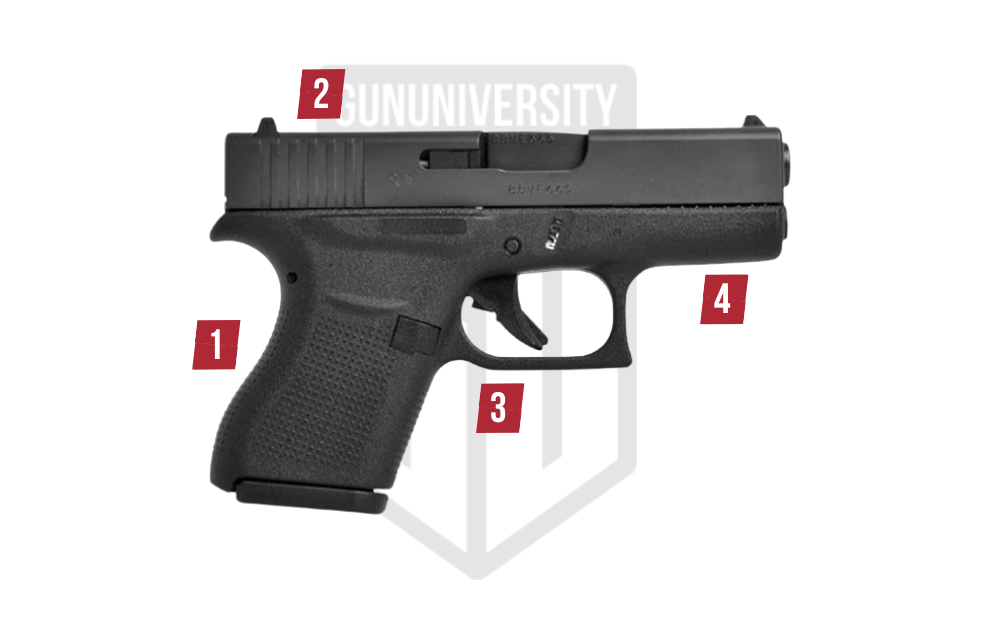
1 Ultra Compact
Both the G42 and G43 share ultra compact polymer frame size.
2 Sight
As per Glock standard, both come with polymer sights. You may want to upgrade them.
3 Safe Action System
Another Glock standard, the Safe Action System is the core of the Glock trigger system.
4 Accessory Rail
Both the G42 and G43 lack an accessory rail. The Glock 43x variant does have an accessory rail.
Glock 42 vs Glock 43 – Our Grades
Glock 42

Shootability
B+Reliability
A-Ergonomics
AAccuracy
BValue
C+Final Grade: B+
Glock 43

Shootability
A+Reliability
A+Ergonomics
A+Accuracy
AValue
A+Final Grade: A+
And the Winner Is?
Both the Glock 42 and Glock 43 are excellent handguns that work perfectly in their prescribed niches. The ultimate winner for you will come down to what you like best, how you wish to carry, and perhaps how new you are to handgun shooting in general. I lean toward the G42 for discreet carry and training new shooters. But the Glock 43 is the more flexible of the two that new shooters can grow into, while old shooters can appreciate it from the get-go.
Most folks who do carry tend to do so along the belt line, where the slightly larger G43 is a nonissue. It is easier to track down parts and holsters for the Glock 43, as well as single out an effective carry load of your choosing. Although the 9mm Luger round in the G43 has more recoil, there is so much variety in 9mm ammunition that recoil can effectively be scaled. A new shooter can start or stick with lighter-grained loads like Hornady Lite 100 grain ammunition or standard pressure 115 grain target loads. Seasoned shooters can simply use what is most familiar and shoot on. It is nice to have these options and the Glock 43 makes it a little easier.
Upgrades and Accessories for your Glock 42 or Glock 43
We encourage all Glock owners to swap out their sights. The polymer sights are functional, but leave somethin to be desired. For handguns you will also want some spare magazines and a good holster.
Upgrades and Accessories for Glock
Magazine – Glock 42 Glock 42 Factory Magazine |  |
| Check Price |
Magazine – Glock 43 Glock 43 Factory Magazine | 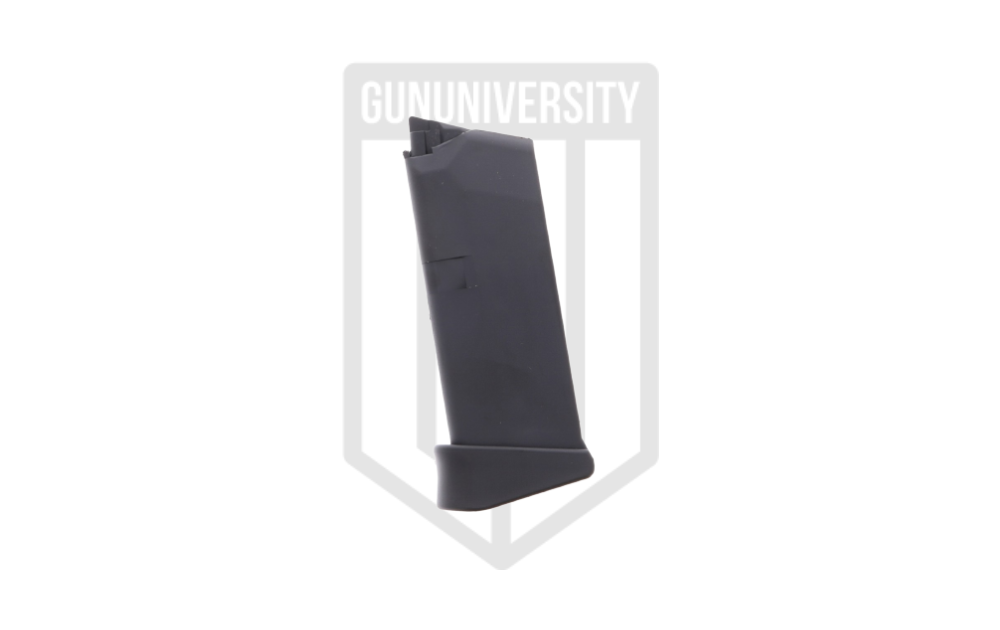 |
| Check Price |
Replacement sights Ameriglo Night Sights for Glock | 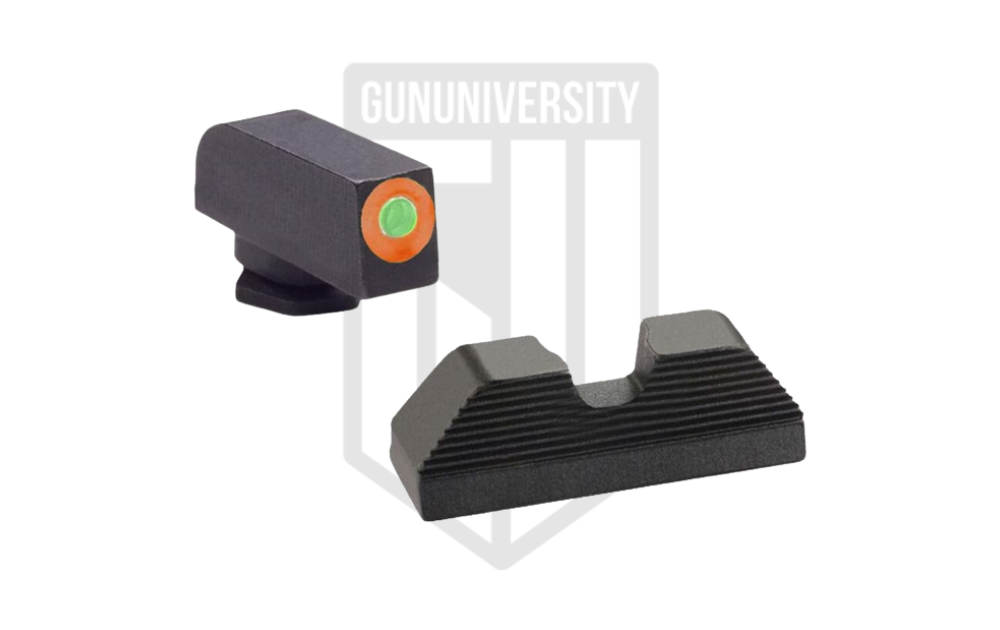 |
| Buy on Amazon |
Holster – Glock 42 Desantis Nemsis Pocket Holster for Glock 42 |  |
| Buy on Amazon |
Holster – Glock 43 DeSantis Slim-Tuk IWB Holster for Glock 43 | 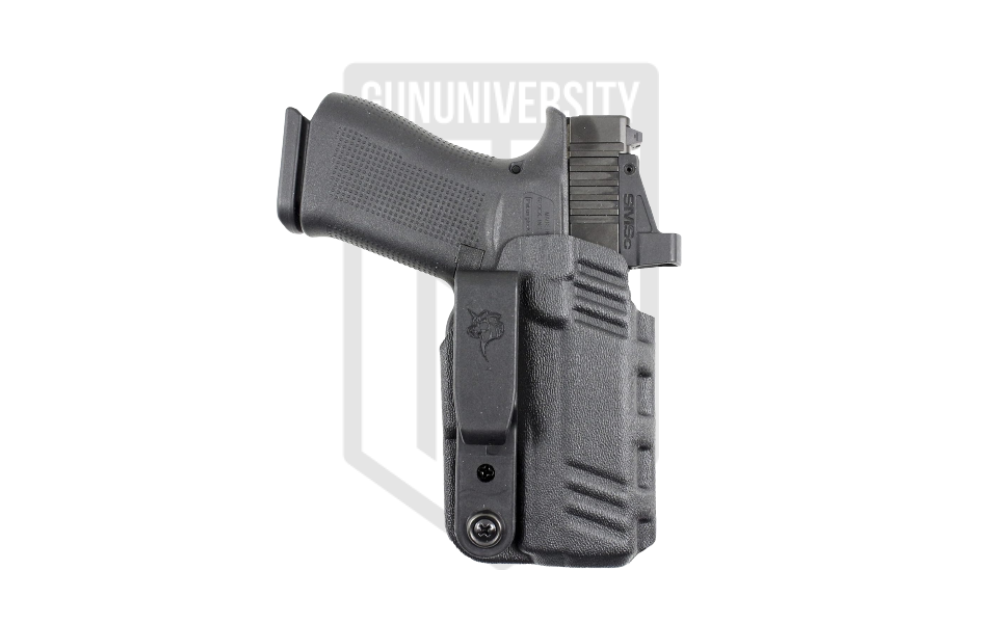 |
| Buy on Amazon |
Important Links and Videos
Here are some links to the Glock website for each model discussed today and the owners manuals.
Here is a video how to care for you Glock pistol.
Recent Posts
July 26, 2024
July 26, 2024
July 25, 2024

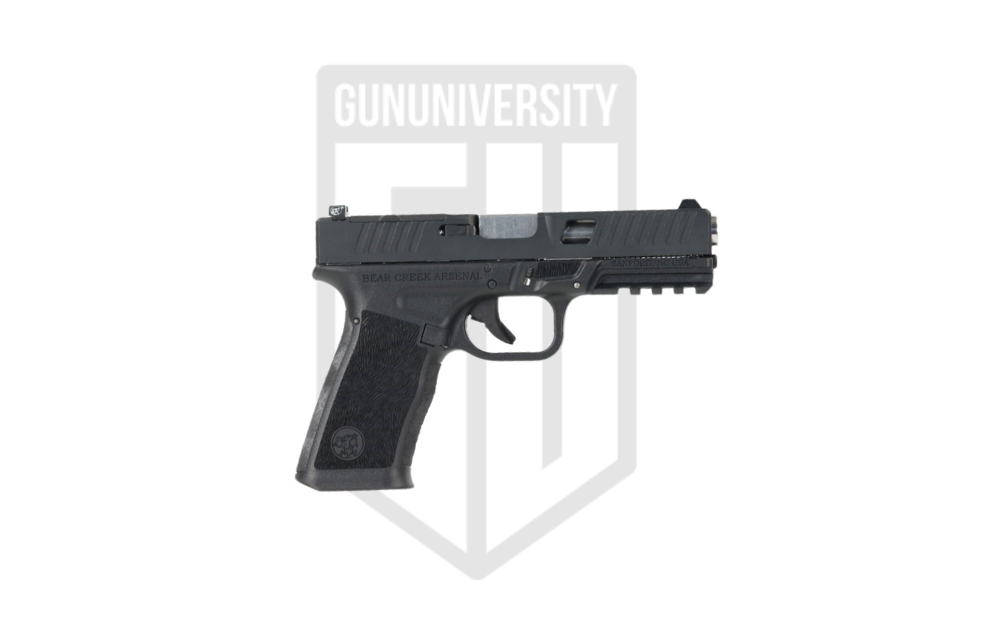
![The Best Shooting Hearing Protection in 2024 [Tested]](https://gununiversity.com/wp-content/uploads/2021/09/best-shooting-hearing-protection.jpg)
